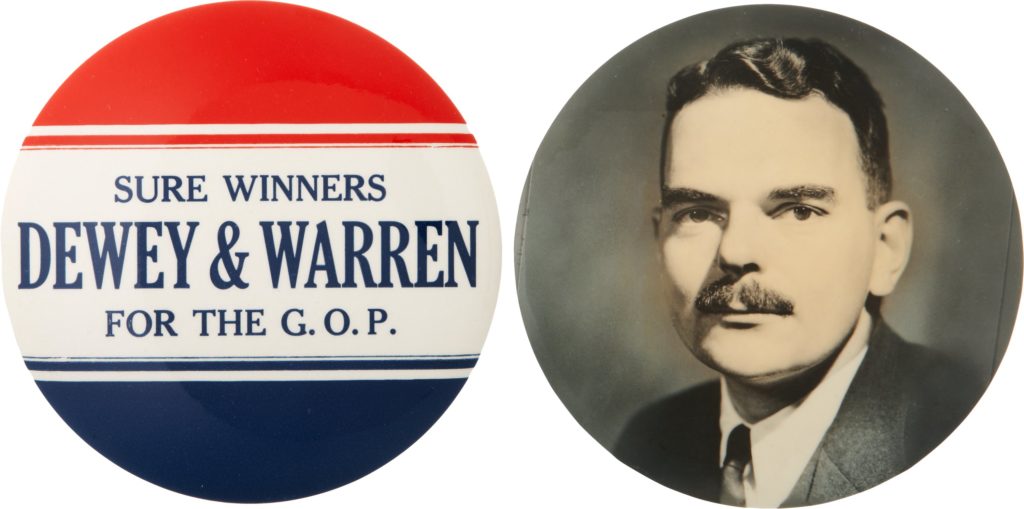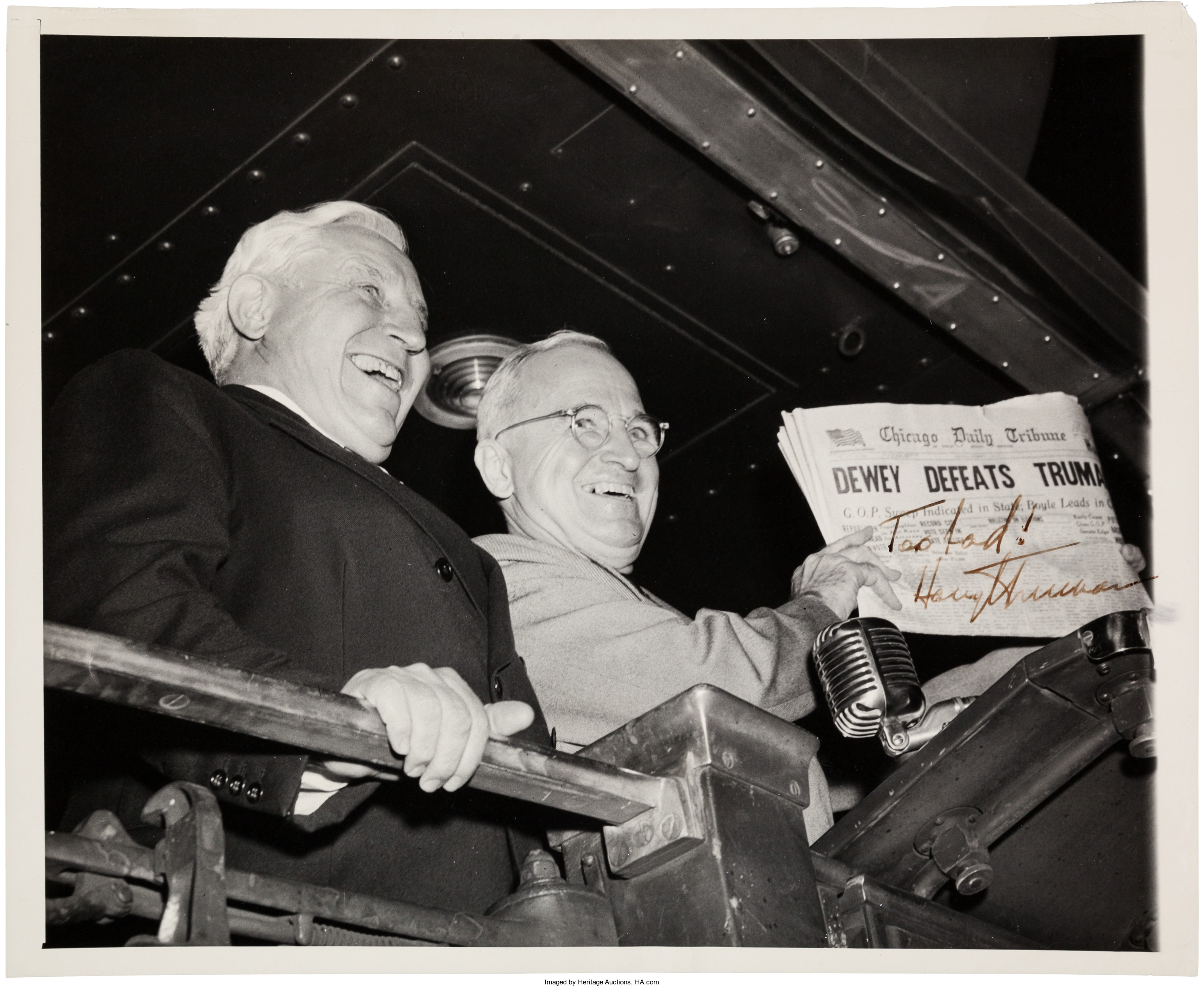
By Jim O’Neal
The political tidal wave that washed over the American continent in November 1946 left in its wake a vastly altered landscape. The triumphant Republican Party had polled 3 million more votes than the Democrats, gaining 54 House seats and 12 in the Senate. Even Democratic President Harry Truman’s old seat would be occupied by a conservative Republican and Kentucky elected its first Republican Senator in 22 years.
It was a rout.
It was also a referendum on Truman’s two-year stewardship and a belated rejection of a New Deal without FDR. Senator J. William Fulbright suggested Truman appoint a Republican Secretary of State and then resign, turning the country over to a president the electorate preferred. U.S. News & World Report declared the president’s chances of winning another nomination at less than 50 percent and predicted Tom Dewey of New York would be in the White House in two years.
Dewey then went on the offensive, attacking the Truman Doctrine as inadequate – “Unthinkable we would surrender the fruits of victory after a staggering cost in blood and resources” – and citing the broken pledge to China, failure to give Chiang Kai-shek airplane parts, and grossly inadequate supplies of arms and ammunition. Also, allowing the Soviets to hold the northern half of Korea and building a well-trained army of 200,000, while the American half had no civil government and no military – a political void with ominous consequences. Dewey predicted “23 million Korean people would move from Japanese tyranny to Soviet tyranny and China would be next.”
America was in a hurry to disarm and Truman’s people were not standing up to the Soviets with sufficient conviction, distracted into debating Universal Military Training. Was it courage or inexperience?
Soon the answer would become apparent to everyone. First, labor leader John L. Lewis and 200,000 striking coalminers were humbled by a contempt citation, fined $3.5 million and ordered back to work immediately. “He couldn’t take the guff,” the president wrote. “No bully can. Now I have the autoworkers, steel workers and railroad men to look forward to. They will get the same treatment.”
This was followed by Truman’s promise to protect Greece and Turkey from the communist threat, the creation of the Central Intelligence Agency (replacing the OSS) and the Marshall Plan to rescue Europe. Suddenly, the man who had seemed a political dead duck six months before was flying high. The polls reflected a remarkable comeback by the president. After trailing Dewey 50 to 28, he had drawn even with him in the polls!
Dewey was not naive. He knew the incumbent president would be a tough opponent and any future election would be closer than the pundits were predicting. But he was an experienced politician and had a terrific record of making government work on whatever level he was at. As New York’s famous district attorney, he made the judicial system work as he rounded up the city’s most powerful and infamous gangsters. As governor, he founded a state university, built a thruway, battled cancer and tuberculosis, and never submitted an unbalanced budget. When he left office, state taxes were 10 percent lower than when he had taken office.
Then, after he accepted the nomination to be the Republican candidate for president in 1948, he was buoyed by a steady stream of congratulations. Winston Churchill wired his discreet best wishes from “the English friend who met you on March 12, 1946.” The editors of Who’s Who sent an advance copy listing Dewey’s address as 1600 Pennsylvania Ave. in Washington, D.C. Pollsters and the press almost unanimously projected him as the winner. Ernest Lindley in Newsweek predicted “only a miracle or a series of political blunders not to be expected of a man of Dewey’s astuteness can save Truman from an overwhelming defeat.”
Even Truman’s closet advisors were worried. “We’ve got our backs on the one-yard line with only a minute to play,” explained presidential adviser Clark Clifford.
Amidst the euphoria, the “first lady of American journalism” Dorothy Celene Thompson – who in 1939 was recognized by Time magazine as the second most influential woman in America next to Eleanor Roosevelt – struck a cautionary note. She wondered aloud if Dewey was the man to rouse something more from voters. It takes understanding to really connect … human feelings, humor, compassion, loyalty – qualities that evoke affection and faith, which is different from confidence.
Thompson seemed to be saying only Dewey could defeat Dewey. We know now that may have happened in 1948, and it also may have happened again in 2016. Voters are savvy people and it takes a special quality to really connect – something polls can’t seem to capture.
 Intelligent Collector blogger JIM O’NEAL is an avid collector and history buff. He is president and CEO of Frito-Lay International [retired] and earlier served as chair and CEO of PepsiCo Restaurants International [KFC Pizza Hut and Taco Bell].
Intelligent Collector blogger JIM O’NEAL is an avid collector and history buff. He is president and CEO of Frito-Lay International [retired] and earlier served as chair and CEO of PepsiCo Restaurants International [KFC Pizza Hut and Taco Bell].

